
New data published in the Journal of Exercise and Nutrition shows that Nutrition21's Velositol, a protein-boosting Amylopectin-Chromium Complex, boosts exercise performance!
Velositol, dubbed "protein's perfect partner" by leading ingredient developer Nutrition21, was recently studied to determine its effectiveness. Researchers tested the ingredient alongside a 15 gram dose of whey protein to see to what extent it enhances muscular strength, lean body mass, exercise performance, and whole body protein balance. Volunteers consumed Velositol over the course of an eight week resistance training program.
The findings were quite remarkable, and were originally presented at the Proceedings of the Annual Conference of the International Society of Sports Nutrition (ISSN) in September of 2020[1] and covered in this article. They were then formally published on July 7, 2021 in the Journal of Exercise and Nutrition in a study titled "Effects of an Amylopectin-Chromium Complex Plus Whey Protein on Strength and Power After Eight Weeks of Resistance Training",[2] with additional information and charts added below.
A follow-up to the 2017 Velositol MPS Study
The study was led by researchers from the Center for Applied Health Sciences (CAHS), located in Canfield, Ohio. The lead researcher and the organization's chief scientific officer, Dr. Tim Ziegenfuss, previously conducted a double-blind crossover study to evaluate the effects of an amylopectin and chromium complex (as Velositol) on the anabolic response to low dose whey protein (6 grams).[3]
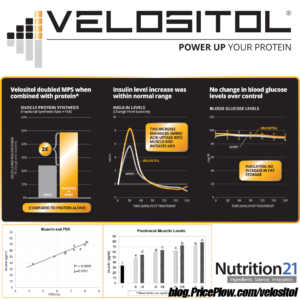
Made by Nutrition 21, the experts in Chromium and Insulin management, Velositol can boost Muscle Protein Synthesis by using chromium and a 'tickle' of insulin-spike from amylopectin!
The original 2017 landmark study compared the effects of 2 grams of Velositol with 6 grams of whey protein to 6 grams of whey protein alone. The results indicate that Velositol and protein doubled the muscle protein synthesis (MPS) response (48% vs. 24%), as measured by the fractional rate of MPS.[3] Because the subjects that supplemented with whey protein and Velositol had higher levels of insulin secretion, the researchers theorized that Velositol boosts MPS by enhancing insulin sensitivity.[3]
Velositol Doubles the Power of Protein, but What Else Can it Do?
Although the findings from the 2017 CAHS study were significant, it only assessed Velositol's potential in an acute setting on a fairly small sample size of 10 participants taking an extremely small amount of protein. So for the next trial, Ziegenfuss evaluated Velositol's chronic effects on exercise performance and whole body protein balance, this time in combination with a higher dose of protein.
Before we dive into the nitty-gritty details of this exciting new research, sign up for Nutrition21 news alerts so you can stay up to date with one of the leading ingredient developers in the supplement industry!
Subscribe to PricePlow's Newsletter and Alerts on These Topics
Research Review: Velositol's Effects on Exercise Performance
Materials and Methods

Nutrition21 is a leader in the industry and takes huge steps towards making supplements safer, more effective, and transparent!
For this new study published in 2021, Ziegenfuss and colleagues recruited 35 recreationally-active middle-aged men. They used a randomized, active-controlled, double-blind design and randomly assigned the subjects to three groups:[2]
- Active Group: 15g of whey protein and 2g of Velositol
- Comparator Group: 15g of whey protein
- High-Dose Comparator Group: 30g of whey protein
The demographics are presented as shown below:
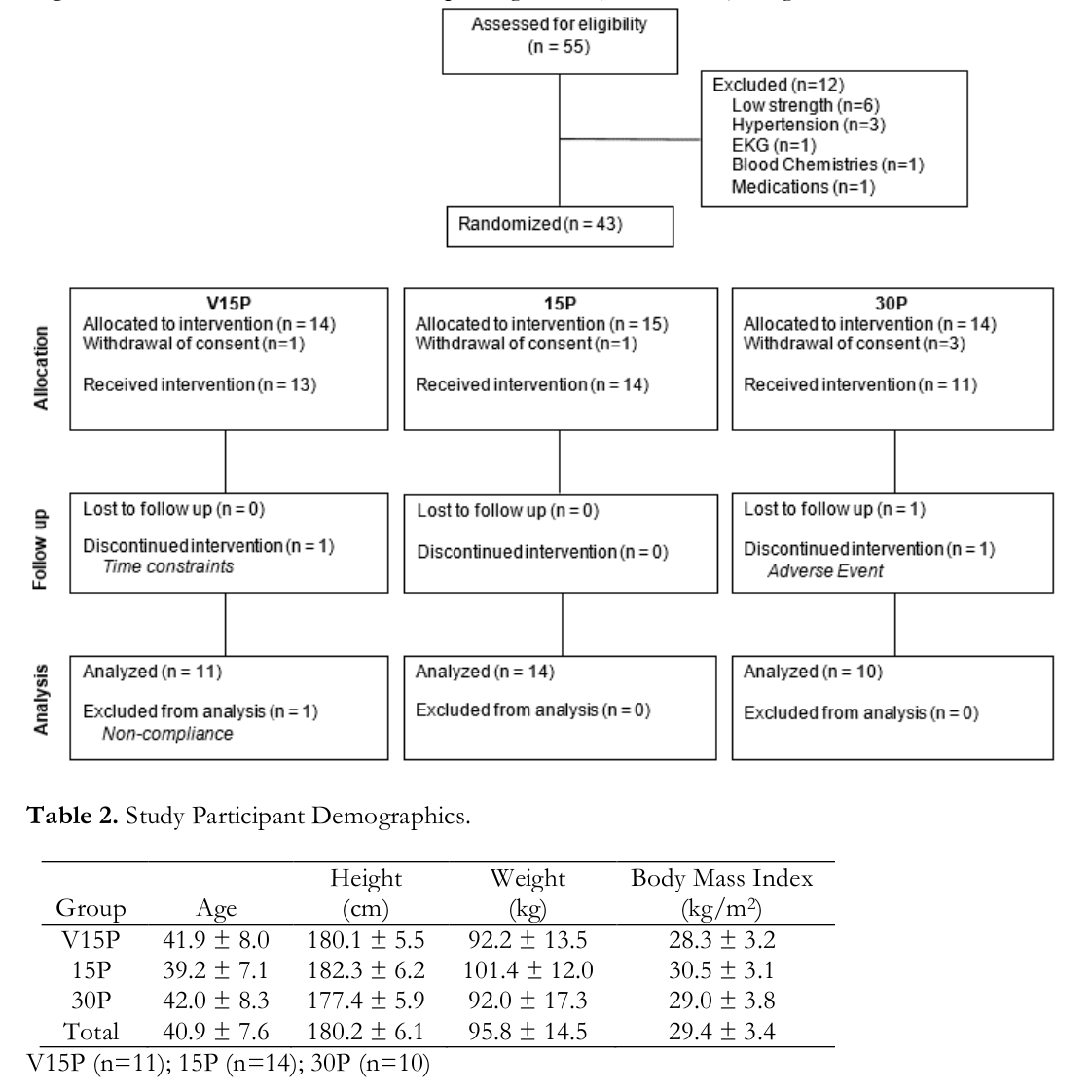
This study was performed on middle-aged men, but excluded some for ineligibility and more accurate results.[2]
The participants consumed their assigned supplement directly after training and at similar times during rest days.
At zero, four, and eight weeks, the researchers collected the following data: body composition (using four compartment model with the Bod Pod, DEXA, and Bioelectrical Impedance); whole-body protein balance (via N-alanine); and upper/lower body performance (using a 1-repetition max and repetitions to failure (RTF) on the squat, bench press, and vertical jump power/height).[2]
To ensure consistent results, the participants were asked to follow an identical pattern of dietary intake for the 24-hour period prior to each study visit while also observing an overnight (10 hour) fast.
It's important to note that this was just part one of the study. Part two, which will be released at a later date, examines biomarker safety and recovery data. We will update this article as more information is published.
Results
Here are some key findings from the study, with notes annotated below:[2]
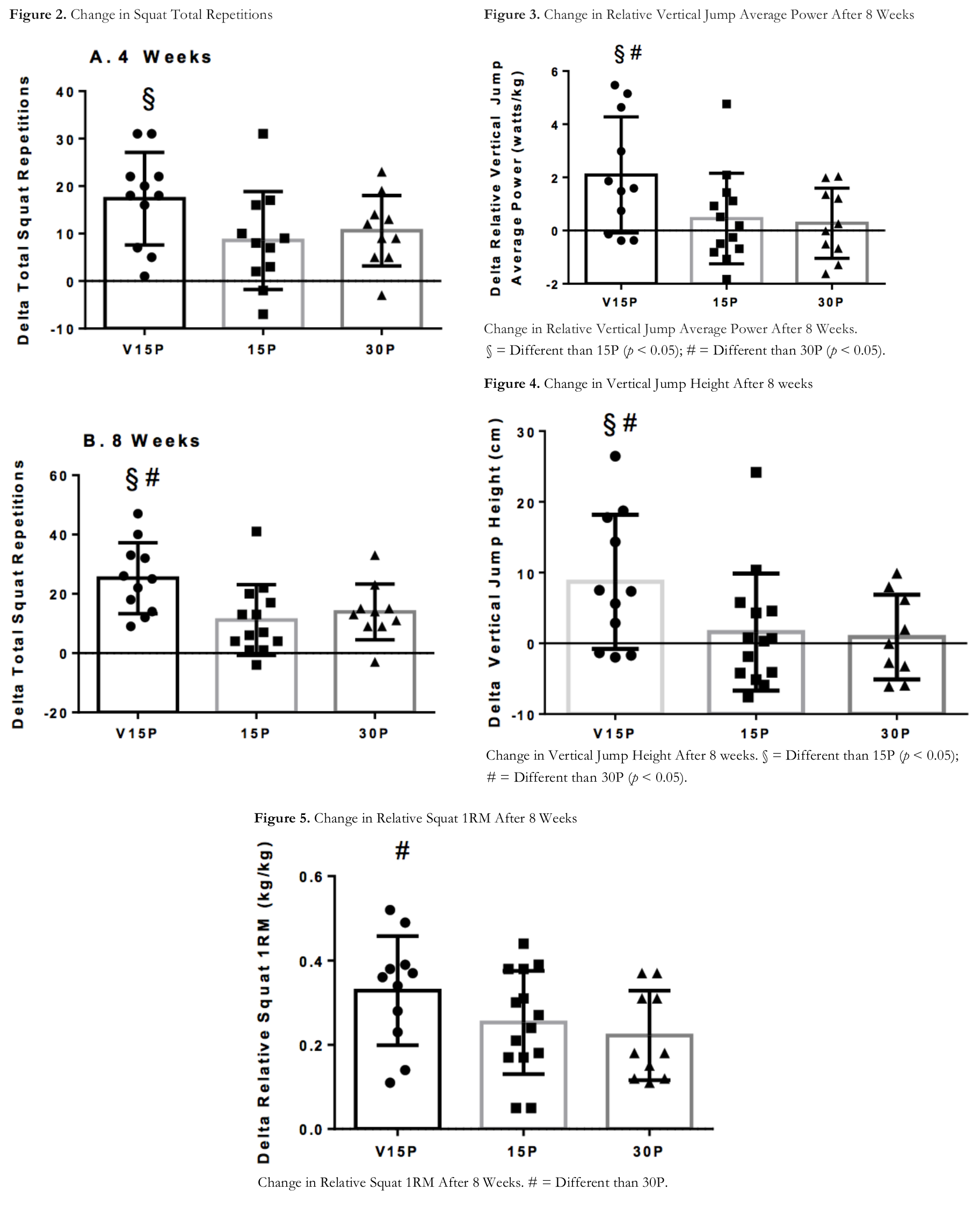
Left: Figure 2 - Change in total squat reps. Top-Right: Figure 3 - Change in Relative Jump Average Power. Middle-Right: Figure 4 - Change in Vertical Jump Height. Bottom: Figure 5 - Change in Relative Squat 1RM. Images taken from pages 12-14 of the study.[2]
- All participants gained strength and increased lean body mass and muscle size while improving their RTF in the squat.
- The active group saw a statistically significant increase in lower body muscular endurance, compared to the other groups, as measured by RFT for squats.
- Vertical jump power and height increased more for the active group compared to the other groups.
- Relative squat strength improved more for the active group compared to the other groups.
- Net protein balance was significantly greater in the active group at four weeks compared to the other groups. At eight weeks it no longer statistically significant.[2]
Conclusion
Ziegenfuss and colleagues found that consuming 2 grams of Velositol with 15 grams of whey protein was the most optimal combination, especially with regards to total squat repetitions, average vertical jump power production, and vertical jump height.
During an eight week resistance training program, the volunteers in this group saw greater increases in vertical jump height, vertical jump power, squat RFT, and squat strength. The men who took either 15 grams or 30 grams of whey protein alone did not see improvements to the same degree.[2]
The team provided a media-friendly summary shown below:
"Ingesting protein before and/or after resistance exercise has previously been shown to augment training adaptations (i.e. muscle strength, muscle size, power output, etc). This study found that combining 15 grams of whey protein with a patented amylopectin-chromium complex increased lower-body muscular endurance and power (e.g. squat repetitions to failure, vertical power, vertical jump), but did not augment changes in body composition in comparison to protein alone."[2]
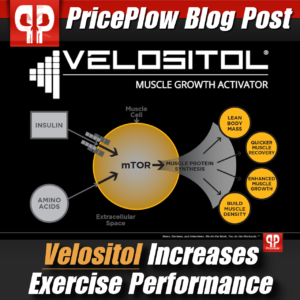
New research shows that Velositol in combination with 15g of whey protein boosts exercise performance!
The researchers theorize that Velositol carries out its performance-boosting benefits by optimizing early adaptations to whole-body protein balance.[2] Whole body protein balance is the difference between muscle protein synthesis and muscle protein breakdown.
So what this means, in plain language, is that Velositol helps the body utilize the protein better at an early point in time. However, more research is needed to fully understand Velositol's mechanism of action in regards to improving exercise performance.
Keep in mind that this is just a preview of the study, which was presented this month at the annual conference of the International Society of Sports Nutrition (ISSN).
To learn more, see our main Velositol article and sign up for our Velositol alerts below.
Subscribe to PricePlow's Newsletter and Alerts on These Topics
This article was originally published on September 18, 2020 and updated on August 2, 2021 once the data was formally published.
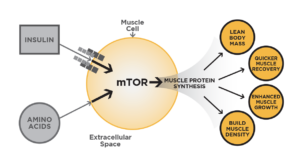
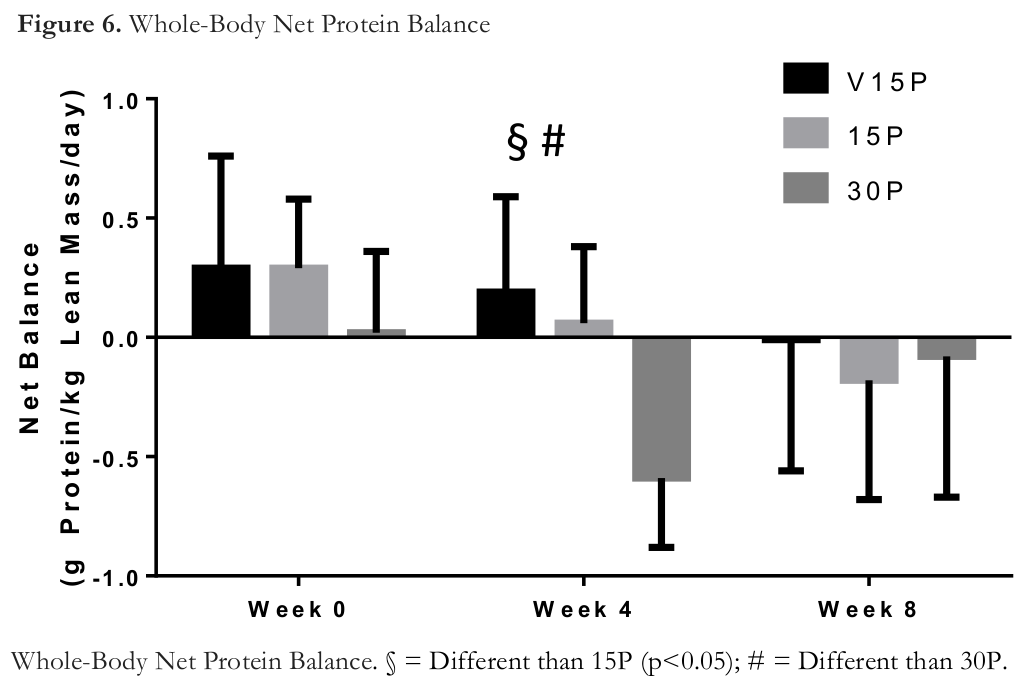


Comments and Discussion (Powered by the PricePlow Forum)